Neutralization of vascular endothelial growth factor antiangiogenic isoforms or administration of proangiogenic isoforms stimulates vascular development in the rat testis
- PMID: 20457593
- PMCID: PMC3122080
- DOI: 10.1530/REP-09-0456
Neutralization of vascular endothelial growth factor antiangiogenic isoforms or administration of proangiogenic isoforms stimulates vascular development in the rat testis
Abstract
Vascular endothelial growth factor A (VEGFA) plays a role in both angiogenesis and seminiferous cord formation, and alternative splicing of the Vegfa gene produces both proangiogenic isoforms and antiangiogenic isoforms (B-isoforms). The objectives of this study were to evaluate the expression of pro- and antiangiogenic isoforms during testis development and to determine the role of VEGFA isoforms in testis morphogenesis. Quantitative RT-PCR determined that Vegfa_165b mRNA was most abundant between embryonic days 13.5 and 16 (E13.5 and 16; P<0.05). Compared with ovarian mRNA levels, Vegfa_120 was more abundant at E13-14 (P<0.05), Vegfa_164 was less abundant at E13 (P<0.05), and Vegfa_165b tended to be less abundant at E13 (P<0.09) in testes. Immunohistochemical staining localized antiangiogenic isoforms to subsets of germ cells at E14-16, and western blot analysis revealed similar protein levels for VEGFA_165B, VEGFA_189B, and VEGFA_206B at this time point. Treatment of E13 organ culture testes with VEGFA_120, VEGFA_164, and an antibody to antiangiogenic isoforms (anti-VEGFAxxxB) resulted in less organized and defined seminiferous cords compared with paired controls. In addition, 50 ng/ml VEGFA_120 and VEGFA_164 treatments increased vascular density in cultured testes by 60 and 48% respectively, and treatment with VEGFAxxxB antibody increased vascular density by 76% in testes (0.5 ng/ml) and 81% in ovaries (5 ng/ml) compared with controls (P<0.05). In conclusion, both pro- and antiangiogenic VEGFA isoforms are involved in the development of vasculature and seminiferous cords in rat testes, and differential expression of these isoforms may be important for normal gonadal development.
Conflict of interest statement
There is no conflict of interest to declare that would prejudice this scientific work.
Figures
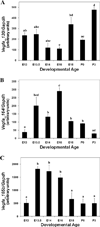
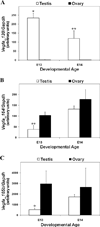
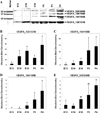
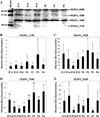

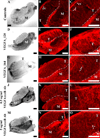

References
-
- Artac RA, McFee RM, Longfellow Smith RA, Baltes-Breitwisch MM, Clopton DT, Cupp AS. Neutralization of vascular endothelial growth factor antiangiogenic isoforms is more effective than treatment with proangiogenic isoforms in stimulating vascular development and follicle progression in the perinatal rat ovary. Biol Reprod. 2009;81:978–988. - PMC - PubMed
-
- Bates DO, Cui TG, Doughty JM, Winkler M, Sugiono M, Shields JD, Peat D, Gillatt D, Harper SJ. VEGF165b, an inhibitory splice variant of vascular endothelial growth factor, is down-regulated in renal cell carcinoma. Cancer Res. 2002;62:4123–4131. - PubMed

